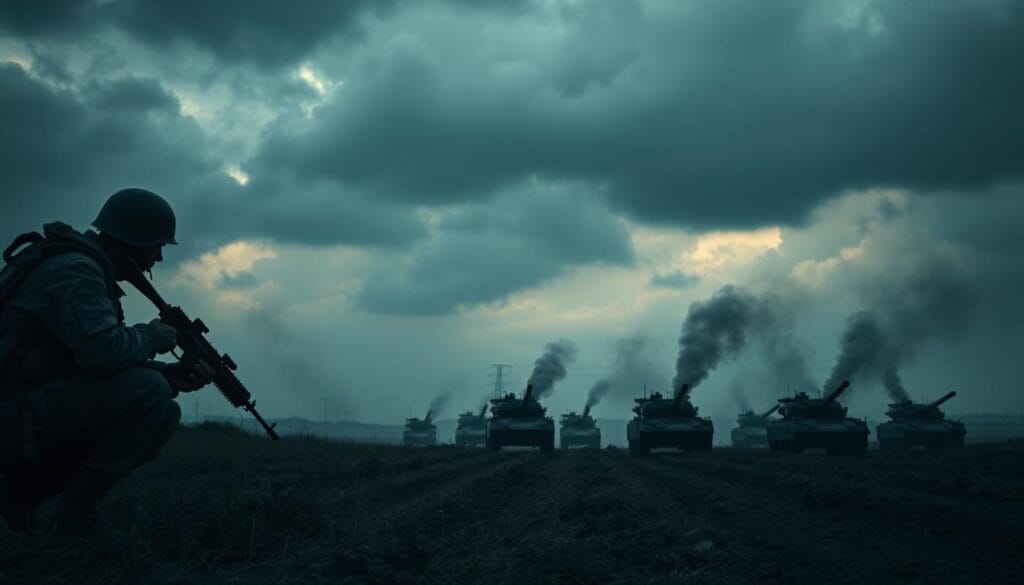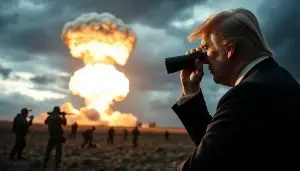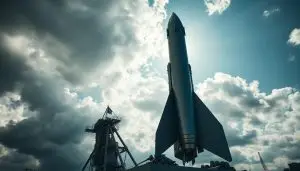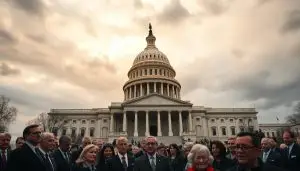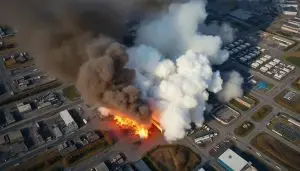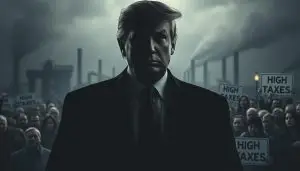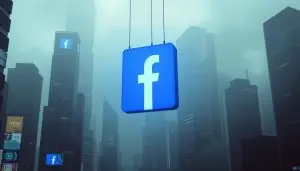Ukraine War Updates: Latest Conflict News
Stay informed with the latest updates on the Ukarine War, covering the most recent developments and key events.
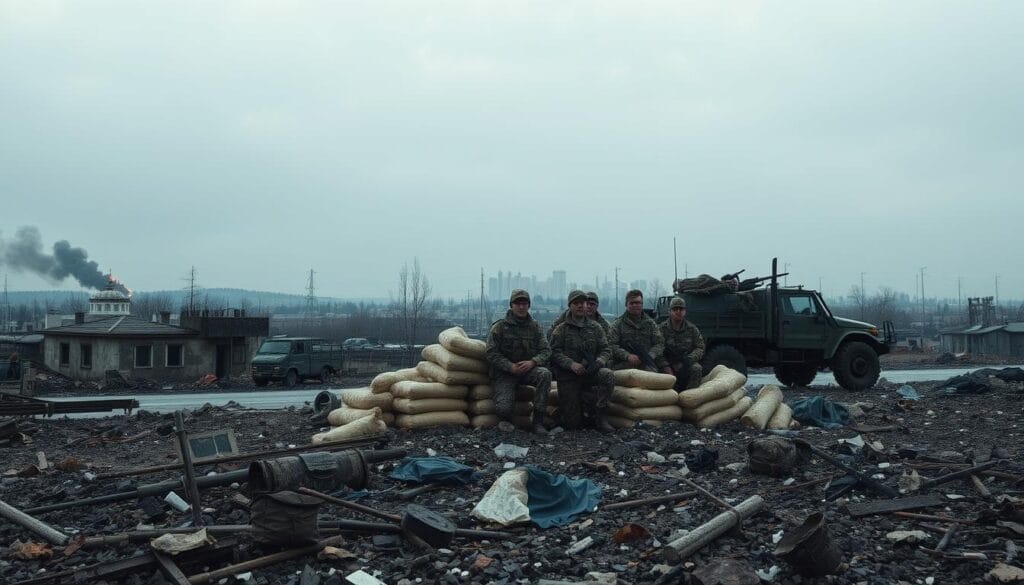
Click to summarize this article.
Ukraine War Updates: The Ukraine-Russia war is facing challenging times. Cities prepare for cold as missiles target substations. Energy has turned into a battlefield. The grid faces overnight attacks, marking how Russia’s invasion affects everyday basics like heat and light.
Volodymyr Zelensky calls his recent discussion with Donald Trump very fruitful. They plan a working lunch in Washington to discuss air defense and possibly Tomahawk missiles. These talks, along with Europe’s legal actions and NATO’s firm stance, are shaping the diplomatic landscape as winter approaches.
Brussels supports the creation of a special court and assisting victims. Mark Rutte’s comment on a struggling Russian submarine signals a change in sea power. This latest brief is a concise update on the Ukraine war.
Ukraine War Updates Key Takeaways
- Russia’s overnight grid strikes intensify pressure ahead of winter as the Ukraine War continues.
- Zelensky and Trump are planning to meet in Washington to discuss air defense and the supply of Tomahawk missiles.
- The EU is committing funds for a special tribunal to aid children and survivors of wartime abuse.
- NATO’s confidence is evident, as Mark Rutte mocks the condition of a “limping” Russian submarine.
- Energy infrastructure has become a central battleground in the Ukraine-Russia war.
- Diplomatic efforts are advancing in tandem with battlefield developments and updates on the conflict in Ukraine.
Latest Developments in the conflict in Ukraine and international response
The situation in Ukraine changes daily, with leaders working fast to influence the outcome before winter. New updates about the conflict reveal a mix of increased diplomacy, more brutal strikes, and expanded legal efforts. The conflict in Kiev now involves the entire world, as the battle between Ukraine and Russia tests global alliances.
Trump–Zelensky talks on potential Tomahawk missile supply and air defense
Volodymyr Zelensky said his talk with Donald Trump was “very productive.” He’s waiting on a decision about Tomahawk missiles and new air defenses. A meeting in Washington is planned to discuss plans after two weekend calls. They will talk about long-range strikes and defenses against the war.
Both sides considered how new supplies might alter the power balance while still engaging with Moscow. For those following the Kiev fight, this report shares the latest updates on timing, goals, and cautious language regarding the situation.
Russia’s overnight strikes on Ukraine’s power grid ahead of winter
Russia targeted energy sites overnight, attempting to weaken the grid before the onset of winter. The aim is to force utilities into rolling blackouts as people prepare for winter. This mirrors last winter’s tactics, with repair crews working under attack.
Zelensky says targeting civilians is a key part of their plan. As the crisis worsens, local leaders are preparing alternative heating solutions. They are stocking up on parts to keep lights on and public transport running.
EU backs special tribunal to prosecute aggression with €10m funding
The European Union is giving €10 million to start a tribunal for crimes of aggression. EU’s Kaja Kallas also promised €6 million for deported Ukrainian kids and survivors of sexual violence. This marks a wider legal approach to the conflict.
Announced in Kyiv, this effort aims to pressure through legal and financial means. It’s part of ongoing help and training, underscoring a commitment to justice and accountability.
NATO perspectives: Zelensky says Putin can be forced to make peace
Zelensky told allies that they could push Putin toward peace by staying united. He linked the winter threats to the need for better air defenses. This shows how the crisis influences security discussions in Europe and the US.
The US has taken steps on training and using controlled weapons, contributing to NATO’s plans and Ukraine’s strength. For more on what’s being sent to help, see this summary on security efforts.
Ukrainian War: escalations, deterrence risks, and battlefield implications
The Ukraine war is testing limits in Europe and the Black Sea. Leaders are devising new weapons, preparing civilians for the winter’s chill. The conflict in Donbass and the wider Ukraine fighting underlie every action in this part of the Russian attack and the Eastern Ukraine situation.
Debates on deterrence have expanded to include discussions of long-distance weapons and the actions that trigger a response. Summits and security agreements are escalating tensions as both sides weigh what’s to be gained or lost on the ground.
Medvedev’s warning on Tomahawk ambiguity and escalation dynamics
Dmitry Medvedev warned that using Tomahawk missiles could lead to grave outcomes for all. He pointed out the difficulty in distinguishing between conventional and nuclear ones once they are launched. This uncertainty raises the risk of escalation in the Ukraine conflict and beyond Donbass.
This caution is being considered while tracking missiles that could hit far-off targets. It sparks deeper discussions on proportional responses and escalation triggers in the conflict.
Ukraine’s request for long-range strike capabilities targeting military sites
President Volodymyr Zelensky has asked Washington for missiles that can strike far and only hit military targets. His advisors believe these weapons would target crucial military points. They think that being cautious with rules and monitoring could reduce the likelihood of mistakes in the Eastern Ukraine conflict.
Discussions with U.S. officials are focusing on the number, timing, and precautions to be taken. Any action would affect the battlefields in Donbass and change the pace of the fighting in Ukraine.
Black Sea and naval posture: NATO chief mocks “broken” Russian submarine
NATO’s Mark Rutte teased about Russia’s Novorossiysk sub surfacing in the English Channel, calling it “broken.” Moscow responded, stating that the submarine surfaced in accordance with maritime rules and denied any problems. This back-and-forth highlights Russia’s diminishing presence in key waterways.
For Kyiv and its allies, reduced Russian naval activity means more opportunities for reconnaissance and shipping. Changes at sea are crucial for grain transport, drone attacks, and air defense related to the Russian invasion.
Energy warfare and resilience: Impact of grid attacks on civilians and the eastern Ukraine conflict
Attacks on power structures become more common as winter approaches, with energy being used as a weapon. The damage causes rolling blackouts and issues with heating and transportation. These attacks are felt strongest in areas where fighting in Eastern Ukraine is intense.
Zelensky has stated that the cold will be exploited as a weapon. Hybrid threats like parcel bombs in Europe and related arrests in Poland show the ongoing tension from the war and the situation in Donbass.
| Long-range missiles | |||
|---|---|---|---|
| Escalation ambiguity after launch | Deeper strikes on command and air bases | Evacuation alerts and shelter strain | |
| Black Sea posture | |||
| Reduced Russian naval presence | Improved reconnaissance and sea lanes | Stabler grain shipping windows | |
| Energy grid | |||
| Persistent winter targeting | Disrupted rail and depot throughput | Heating, water, and blackout risks | |
| Hybrid activity | |||
| Parcel bomb plots and spying | Security diversion and delay | Higher alert across couriers |
Capitals are analysing these risks, keeping a steady eye on supply chains, air defenses, and trust-building measures. The Ukraine conflict, stemming from Russia’s invasion, keeps evolving. Each exchange and countermove is changing the landscape and tempo of the Eastern Ukraine fight.
Ukraine War Updates Conclusion
This week in the Ukraine conflict, the struggle has intensified with the winter. Russia has increased its attacks on Ukraine’s power supply. Kyiv is requesting additional air defense and precision weaponry from the U.S. Meetings between Donald Trump and Volodymyr Zelensky could lead to big decisions on military support.
The danger of the situation escalating is clear. Dmitry Medvedev’s vague statements about Tomahawks mix up nuclear and non-nuclear threats. While Kyiv promises to hit only military sites, NATO stands strong. A joke from Dutch Prime Minister Mark Rutte about Russia’s navy shows the alliance’s strength. To get deeper into this, check the discussion on advanced missile tests.
Europe is taking legal steps. The EU is investing in a special court and supporting war victims. This aligns with tough sanctions and military training to support Ukraine. For more, see the story on Russia facing defeats.
Zelensky believes NATO can encourage Vladimir Putin to pursue peace. This war tests if the West can stick it out. Success depends on air defense, steady energy supply, and clear warnings against escalating the conflict. As winter deepens, these factors become even more critical.
Ukraine War Updates FAQ
What are the latest Ukraine war updates as winter approaches?
As winter comes, Ukraine is preparing for more challenging times. Russian attacks on the energy grid have increased. These attacks damage the infrastructure needed for electricity and heating. Meanwhile, leaders from Washington, Brussels, and NATO are discussing how to respond. They’re thinking about new defenses and strategies to counter Russia’s actions in Ukraine.
What did President Volodymyr Zelensky discuss with former U.S. President Donald Trump?
Zelensky found his recent talks with Trump very helpful. They discussed strengthening air defense and possibly adding U.S.-made Tomahawk missiles. After talking twice last weekend, they plan a working lunch in Washington on Friday. Their focus will be on missile supply and finding ways to end the conflict between Ukraine and Russia.
Are Tomahawk missiles part of the discussions?
Yes, they are. Zelensky has a clear plan for how many Tomahawks Ukraine needs. He wants to use them against military sites. Trump is considering this idea. He might even discuss it with Vladimir Putin. This shows the complexities of deterring conflict in Ukraine.
How are Russian strikes affecting Ukraine’s energy grid?
Russia is targeting Ukraine’s power facilities with night attacks to weaken the grid before winter. These strikes harm civilian infrastructure and could cause power outages and heating problems. This is especially tough in eastern Ukraine. Zelensky says Russia uses terror to wear down Ukraine’s resistance as it gets colder.
What support did the European Union announce for Ukraine?
The EU’s Kaja Kallas pledged €10 million for a special tribunal about attacks on Ukraine. They will also give €6 million to help Ukrainian children and victims of sexual violence from the conflict. These funds from Kyiv demonstrate growing legal and humanitarian support, as well as discussions on military aid.
What did Zelensky tell the NATO Parliamentary Assembly?
Zelensky believes we can push Vladimir Putin towards peace. He sees Russia’s winter attacks as acts of terrorism. He’s asking for unity among allies. Zelensky points out that the Ukraine crisis is still a significant cause of worldwide instability. This comes as issues in Gaza are decreasing.
How is NATO characterizing Russia’s naval posture?
NATO’s Mark Rutte made fun of a “broken” Russian submarine, the Novorossiysk, seen in the English Channel. Despite Russia’s denial of issues, this shows they have less naval strength in the Mediterranean. It also alters our perspective on maritime situations, influencing the conflict in the Donbass and the Black Sea routes.
What are the escalation risks if Ukraine receives Tomahawks?
Dmitry Medvedev warns that giving Tomahawks to Ukraine might lead to trouble for everyone. It’s hard to tell conventional missiles apart from nuclear ones after they’re launched. This could make deterrence tricky, even though Kyiv says it will target only military places inside the conflict zones of Ukraine.
How would long-range strike capabilities change the battlefield?
Having long-range missiles would let Ukraine disrupt Russian support and control sites from afar. This, along with better air defenses, would help Ukraine stop missile and drone attacks. It could change how the conflict in eastern Ukraine and the wider conflict unfold.
What is the impact of energy warfare on civilians and the front lines?
Attacks on the grid threaten basic needs like heat and water, making it difficult for hospitals and the military to operate. Local leaders are working to address the issues and develop plans. But if the attacks keep up, it will be hard to stay strong in Kiev and other areas affected by the Ukraine crisis.
What recent security incidents concern Europe?
Europe is on high alert after parcel bombs were found in Britain, Germany, and near Warsaw. These are linked to suspected Russian activities. Two Russians in Poland are charged with spying, one with a bomb plot. This highlights the dangerous methods threatening NATO’s eastern border.
What outcomes are expected from the Trump–Zelensky Washington meeting?
The meeting in Washington aims to fine-tune U.S. support, with a focus on air defense and possibly the deployment of Tomahawks. Their decisions could shape how America responds as winter approaches and Russia intensifies its attacks. It’s a critical moment for the ongoing conflict between Ukraine and Russia.
